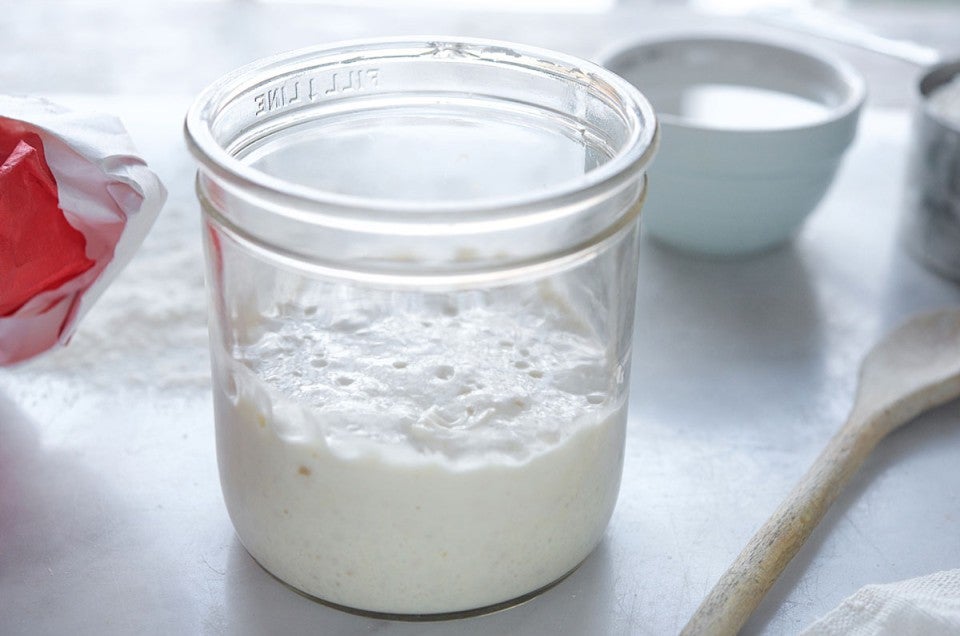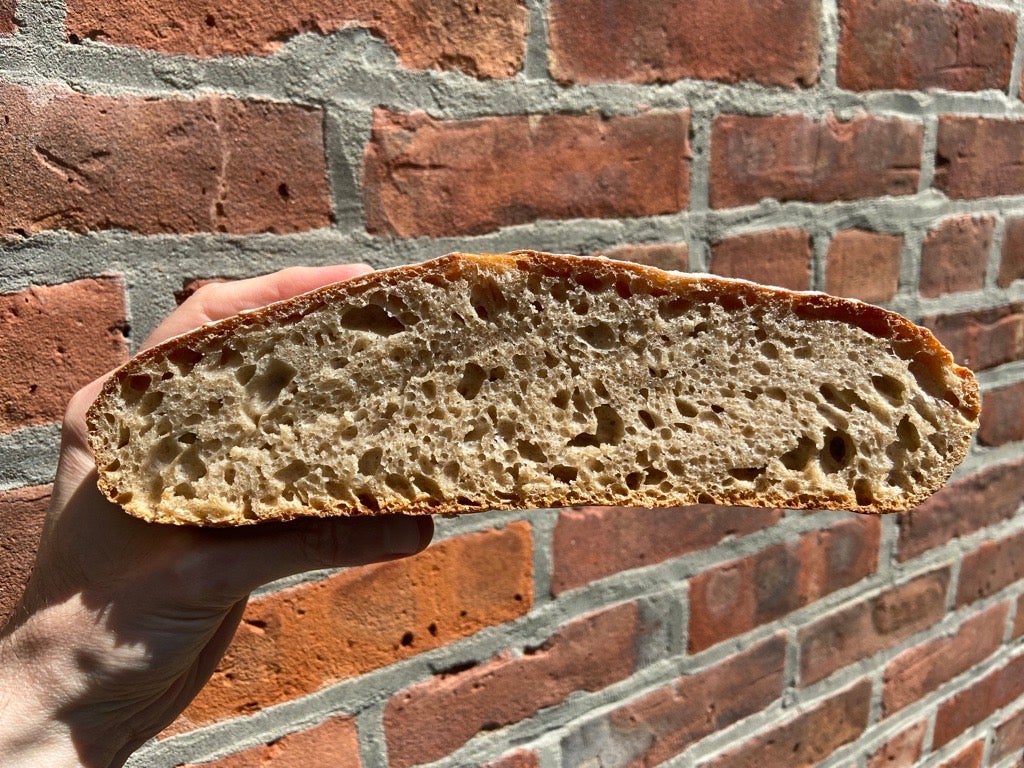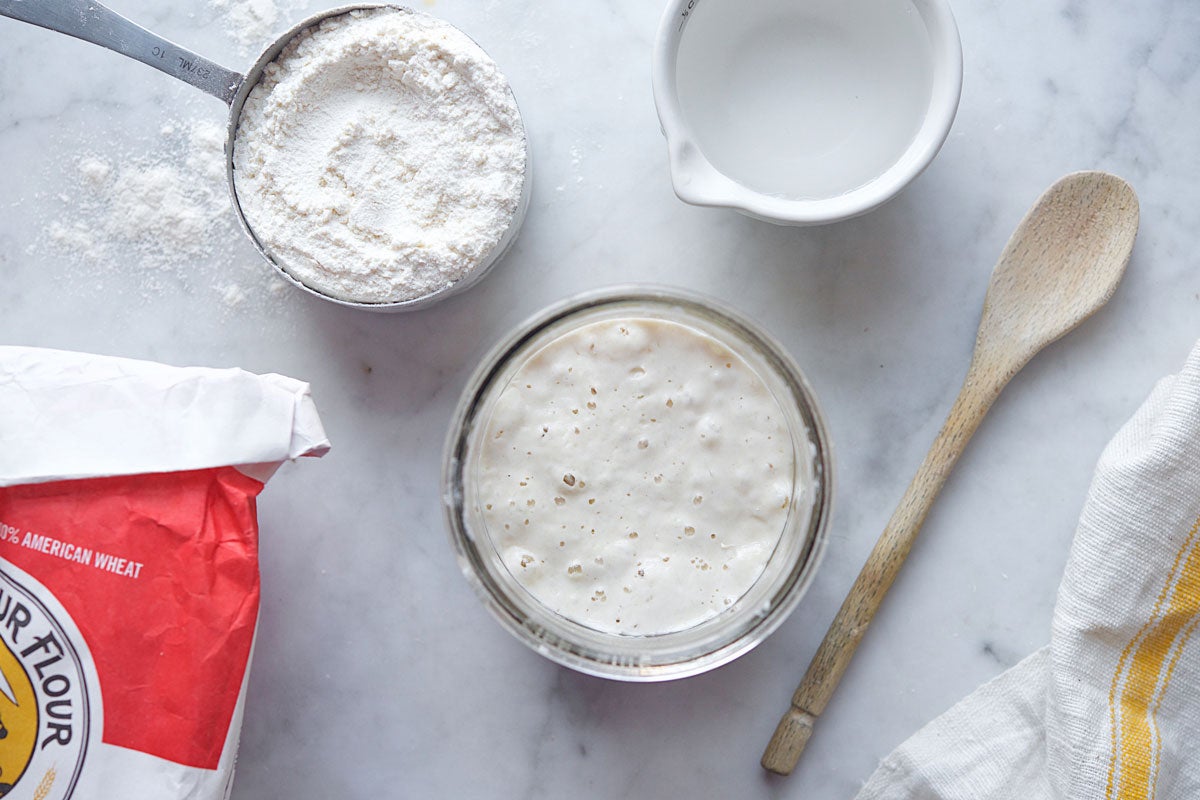Ask the Bread Coach: Can sourdough starter be too active?
Sometimes the secret to a tall loaf is a starter that’s been slowed down.


A few weeks ago I reached into the deepest corner of my fridge and retrieved the plastic tub of sourdough starter I’d stashed six months prior. It was thick, like porridge that had sat on the counter too long, and as I stirred it I knew it was beyond dormant, possibly dead. I fed it anyway.
It took a couple of days, but eventually the starter was bubbly and risen, its weblike mass climbing the mason jar’s walls. It was, in other words, ready. But was I?
I had stashed the starter away for reasons I couldn’t quite remember. Maybe I’d become bored with making the same bread recipe over and over again. Maybe I’d simply realized that where I live (New York City), great bread — far better than I can make at home — is all around me.
And yet something was pulling me back to sourdough. I didn’t question what it was; I just kept feeding my starter. It was the most active starter I’d ever maintained — I suspected that if I let it out of the jar, it would go all horror movie on me, overcoming my kitchen and, eventually, me. I took its unbridled energy as an omen that I was ready to bake bread again, and dipped my toe back into the process with the most low-key recipe I could find.
When I pulled the loaf out of the oven, I remembered why I’d stopped making bread in the first place. The loaf was flat. Not Frisbee flat, not overproofed flat, but a good inch or two shorter than I had hoped. I tried a different recipe, and even bought a bigger Dutch oven, but my bread didn’t grow taller.
I figured there were two ways my journey could go: I could once again banish my starter to the far reaches of my fridge and hope that it wouldn’t subsume me. Or I could keep going. But if I was going to continue on the bread path, I would do it with help. I was a rookie, after all. I wanted to sprint and jump and clear hurdles, but I was training blind, because I was training by myself.
I needed a coach. And because I’m privileged to work among some of the best bakers in the country, I was able to recruit one. Martin Philip, cookbook author, educator, and former lead baker of the King Arthur Bakery's bread team, was happy — and perhaps foolish enough — to take me on as a trainee. At our first coaching session, we focused on the key that ignites the engine: my wild, unruly starter.

David Tamarkin (showing a photo of one of his loaves, above): Awful, right?
Martin Philip: I mean, it's only awful if you were going for something different. If you like that profile, then you nailed it. You know what I mean? So I think that the first thing to identify is: what’s the gap between what you wanted and what you made? And if you say, “Well, the gap is that it looks a little slumpy to me,” I would say, OK, we can fix that. So: Is this the loaf that you wanted to make?
DT: It’s not. And I guess as my coach you should know this is a common problem for me. Everything goes well up until 20 minutes into baking, when I take the lid off the Dutch oven and see that there’s been no oven spring. With this loaf in particular I’m worried I overproofed because during the bulk fermentation the dough more than doubled within 10 hours. [Ed note: The recipe states that the dough should roughly double in 12 hours.] And it was a very tepid day! But the dough had really started going crazy, so I was like, oh, I better shape this. Which is what I did.
MP: Got it. You know, we call ourselves bakers, but the truth is we're fermentologists. It's really about guiding fermentation. Think about the bread-making process: The bread you’re making takes, what, 24 hours? But the bake just takes 50 minutes. So the biggest part of this process is really guiding fermentation. What I think needs to happen here is we need to go back upstream, all the way to the beginning. We should look at the quantity of inoculation [the amount of starter used], especially since we’re in the middle of summer [hot weather can make a starter more active]. How much culture did you use for that kilo of flour?
DT: 40 grams.
MP: I mean, that's pretty low. You must be taking really good care of your starter.
DT: It’s crazy right now. I don't know what's going on. I'm keeping it in the fridge and only feeding it once a week, but every time I feed it, it goes nuts. Can a starter be too active?
MP: I'm the kind of person who would meet the starter where it is, as opposed to trying to slow it down. But if you're feeling like your starter is consistently running away from you — like really running away from you — then one consideration would be to slightly lower the level of inoculate when you're doing your feedings. So instead of refreshing the starter with, say, 40 grams starter, maybe use 20 grams of starter, 30 grams of water, and 50 grams of flour. Just give a little bit less and it'll move less quickly because you’ll have fewer organisms that are trying to populate that mass.

DT: So, I feel like I should tell you here, I’m currently using a 50/50/50 formula. I'm doing 50 grams of inoculate starter and adding 50 grams of water and 50 grams of flour.
MP: [Based on how quickly your dough doubled], that ratio may be too high for your starter. That’s the reason your starter is so active. It’s like starting a fire with equal parts gasoline and sticks, you know what I'm saying? As opposed to lightly spritzing the sticks with gasoline, you’re whistling past the gas station with a flame thrower.
DT: Dang! 20 grams starter, 30 grams water, 50 grams flour it is. Will this new ratio change the consistency of my starter?
MP: You’ll notice a difference, as this starter will be stiffer and have a more dough-like consistency. This shouldn’t affect your overall bread dough but, as always, use your intuition and add some water, if necessary, to achieve a dough that feels supple.
DT: Anything else I should try out?
MP: The other thing that I would look at is, sometimes if I put a loaf into the fridge to retard overnight, especially in the summer, the fridge struggles to keep the dough as cool as what I want. You know what I mean? Because it sounds like your dough really kept growing overnight, which is not what you want. [After a 12-hour bulk ferment at room temperature, this recipe calls for the shaped dough to have a 12- to 16-hour retard in the fridge.] You should have some noticeable expansion, but it shouldn't be like, oh my God, you know?
DT: Oh. Mine was almost spilling out of the basket.
MP: One thing you might consider is to put the loaves into the fridge uncovered for the first half hour. And what that's going to do is, the fridge will suck some of the heat off of them and it's going to slow the fermentation down. And then after that point, cover it for the rest of its stay. If you do that, and start feeding your starter a little less aggressively, I think you're on your way. I'm excited to see what happens. If it doesn't work? I'm coming to New York.
Got a question for the Bread Coach? Leave it in the comments below and it may be addressed in a future column.